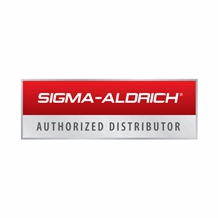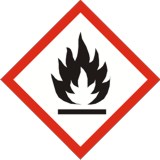SUPELCO Carbosieve® Adsorbent, matrix Carbosieve® G, 80-100 mesh, bottle of 5 g, 0, Each

|
|
Details:
Specifications Density: ~0.27 g/mL (free fall density)General description: Our Carbosieve® Carbon Molecular Sieve (CMS) materials have closed-pore structures. That is, the pores do not pass through the particles. These materials tend to have very strong adsorptive strengths due to being predominately microporous. However, the lack of tapered pores may result in larger (>C5) analytes blocking pores, preventing smaller analytes from reaching available pore sites. When protected properly with weaker adsorbents upstream, the Carbosieve materials provide great performance for many small, volatile analytes that most adsorbents have trouble retaining.For more information about any of our carbon adsorbents, please visit sigma-aldrich.com/carbonOther Notes: While these carbon materials are stable to above 400 °C, the temperature actually used at depends on the application. For example, thermal desorption unit (TDU) tubes are typically desorbed at 330 °C, purge traps containing just carbons typically use a 250 °C desorption temperature, and GC column applications may work best with final oven temperatures of 225 °C. For assistance in determining the proper temperature for your application, contact Technical Service at techservice@sial.comLegal Information: Carbosieve is a registered trademark of Sigma-Aldrich Co. LLCDensity: ~0.27 g/mL (free fall density)Matrix: Carbosieve® GPackaging: bottle of 5 gParticle Size: 80-100 meshPore Size: ~6-15 à pore diameterSurface Area: ~1160 m2/g
Additional Information
| SKU | 5186511 |
|---|---|
| UOM | Each |
| UNSPSC | 41116105 |
| Manufacturer Part Number | 10199 |
| CAS Number | 7440-44-0 |
| HS Code | 3802100000 |
|---|---|
| UN Number | UN 1325 |
| Proper Shipping Name | Carbo |
| Packaging Group | PG III |
| Commodity Code | 587 |
| DG or HZ | HZ |
| Hazardous Class | 4.2 |
| Label |  |
| Molecular Formula | C |
| EC Number | 231-153-3 |
| HIN | 40 |
| Hazard Statement | H251 |
| Precautionary Statements | P210-P235+P410-P420-P240-P241-P280-P370+P378a |
| Risk Statements | 36/37-36/37/38-20-10-11 |
| GHS | GHS02 |
| GHS (Pictogram) |  |
| Safety Statements | 26-36-24/25-22-36/37 |
| Hazard Code | F,Xn,Xi |
| Signal Word | Danger |

